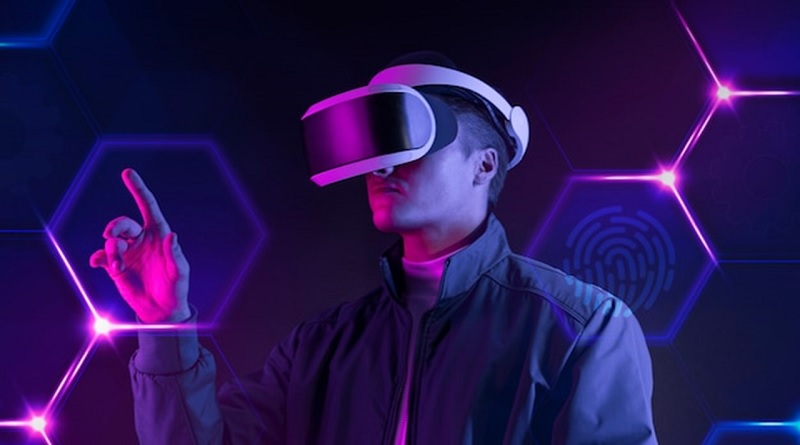Metaverse: The ultimate destination marketing tool?

Over the last 12 months, the Metaverse, NFTs, and digital collectibles have risen to popularity in the mainstream market. According to a Bloomberg Intelligence analysis from December 2021, the metaverse industry represents an US$800 billion market opportunity, prompting brands and enterprises across the spectrum to investigate involvement and establish metaverse strategies.
For the IR industry, the metaverse could be the best solution for in-market engagement and marketing to next-generation customers, as well as a way to meet non-gaming and tourism-related requirements that are likely to be included in Macau’s gaming concessionaires’ upcoming gaming license renewal tender. The current advancements in Asia’s metaverse ecosystems, as well as prospective use case possibilities for the IR sector, are discussed in this article.
NEXT-GENERATION SOCIAL ENGAGEMENT
In essence, the metaverse serves as a virtual platform for the next generation of online social interactions. These metaverse environments, in practice, project a digital representation of real-world examples – cityscapes, shopping districts, entertainment parks, campuses, CBDs, and so on – where users can participate in fully immersive, virtual experiences that go beyond merely 2D images on a digital or mobile screen.
Importantly, the metaverse allows users to interact with one another in a virtual realm, allowing for more accurate replication of real-world social interactions. As a result, the metaverse offers a substantial tool to augment and reinforce in-person contacts with clients, especially among younger, tech-savvy consumers, for all industries that include social connections, notably in the leisure and entertainment sectors.
METAVERSES FOR THE CHINA MARKET
Geographical variations in the growth of these new metaverses have emerged, and enterprises in Macau, China, and Hong Kong should take this into account when planning their metaverse entry strategy.
The main technology corporations in China – Tencent, Alibaba, Bytedance, NetEase, and Baidu – are all investing in the development of their metaverse platforms, creating a separate variety of metaverses for the Chinese market. The features of Chinese metaverses differ noticeably from those of metaverse platforms developed by Hong Kong, European, and American developers. Regulation has a significant impact on the development of metaverses in China. As a result of the Chinese financial authorities’ instruction, it is clear that Chinese metaverses will not support cryptocurrencies. They don’t allow speculative trading of digital assets like NFTs, which include virtual land plots, nor do they create their in-world token currencies.
In October 2021, the China Mobile and Communications Association formed a Metaverse Industry Committee, which will be a lynchpin in controlling the development of metaverse platforms in China in the future. The Metaverse Sector Committee is responsible for thought leadership on the metaverse in China and for strengthening integration within the metaverse industry.
Certainly, the metaverse will have a significant impact on social commerce and consumption in the China market in the future, with Chinese cities and regions now incorporating the metaverse into their five-year development plans, especially for the IT industry. Nevertheless, the Chinese metaverse ecosystem is still in its infancy, with Chinese technology companies laying the groundwork for future applications, which will likely first involve AR/VR-supported games and interactive environments. Tencent has unveiled plans to expand computer gaming and gamification into the metaverse, and this approach is mirrored by Bytedance’s recent acquisition of the VR headset manufacturer Pico to complement the company’s development of its social gaming offering. Meanwhile, the first Chinese metaverse app, Xi Rang, was launched in December 2021 by the Chinese technology company Baidu with three experience scenarios that are linked to Baidu’s VR platform – although it will likely take several years before Xi Rang and competitor metaverses reach full potential and a sophisticated offering.
An important characteristic of the Chinese metaverses is the centralized nature of the platforms which are entirely developed and controlled by the operators themselves. The platforms do not track the decentralized, community-based (DAO — decentralized autonomous organization) structures and self-build approach which are intrinsic to metaverse platforms in other regions. Hence, for brands to feature within one of the Chinese metaverses in the future, it seems likely that they will need to contract directly with the platform operator to establish their presence, similar to the current mechanics for creating a mini-program and official account within WeChat, Alipay or Douyin.
INTERNATIONAL METAVERSE PLATFORMS AND VIRTUAL LAND PLOTS
Aside from the Chinese market, several developer firms are trying to establish the “ultimate metaverse” for consumers all over the world. Decentraland and Hong Kong-based Animoca Brand’s The Sandbox are currently the most well-known metaverses in terms of token valuation and media coverage, while others include Axion Infinity, NFT universe, Atlas, and Meta’s Horizon Worlds. Each of these metaverses has its own set of in-world currency tokens, which are blockchain-based tokens that users must buy to transact. Transactions in Decentraland, for example, necessitate Mana tokens, whereas transactions in The Sandbox necessitate Sand tokens, both of which can be purchased on cryptocurrency exchanges such as Binance and Coinbase.
The metaverses themselves each have their own rules, community sizes, currency tokens, and plot sizes and layouts. Although the metaverses operate on similar principles, each is different and has its Terms of Use which contractually govern activities on the platform and are validated through smart contracts. An intrinsic part of the development of these metaverses is the concept and mechanism of virtual property. Brands, organizations, and users can buy virtual land plots on which resolution they can create virtual stores and properties for in-world sales or display marketing of real-world products and services. Virtual land can also be revenue generating in itself: owners can charge users to access or view a particular space in the virtual world: for instance, to watch a movie in a virtual cinema or to view a museum or a gallery, or attend a VIP music concert.
The ownership framework of these virtual land plots comes in the form of a non-fungible token, which can be purchased from NFT marketplaces, such as OpenSea, as well as directly from the metaverse developer. The value, and hence the cost, of the virtual plot, depends on its position within the topography of the virtual world: the area, district, and adjoining neighbors have an impact on the valuation, similar to the economics of property sales in the real world. If the plot is in the fashion district, or a popular area, the land will have greater value because of the volume of passing (virtual) foot traffic and the potential for generating advertising revenue from paid advertising on the plot.
Following the purchase of the virtual plot, owners can digitally construct their construction on the plot, which could be a virtual store, theme park, music venue, or something else entirely. As a result, metaverse platform operators supply tools and editing suites to allow users to program their visuals onto the platform to design their buildings and structures. There are differences in metaverses: some more advanced metaverses use high-resolution pixels and images, which are more appealing from a user-experience standpoint but more difficult to create for non-specialized graphic artists.




